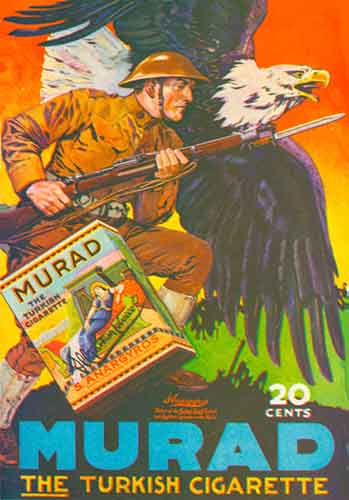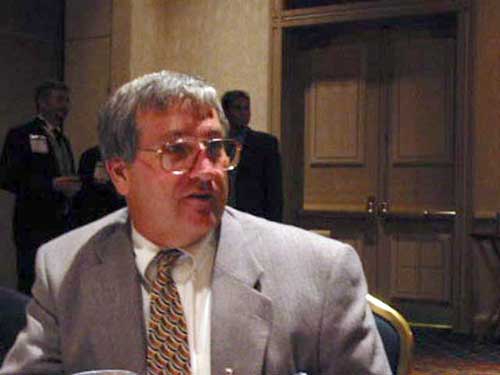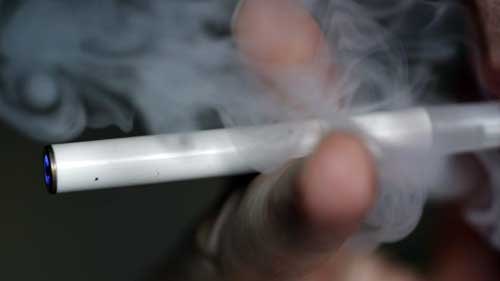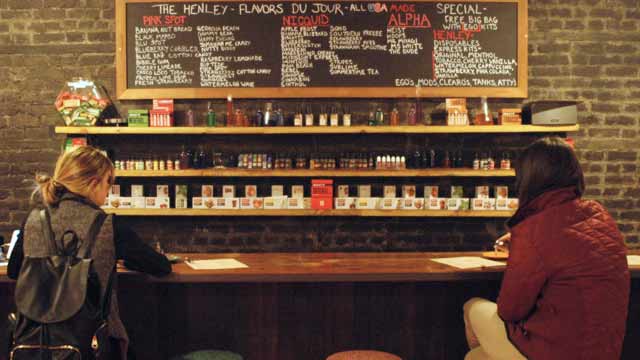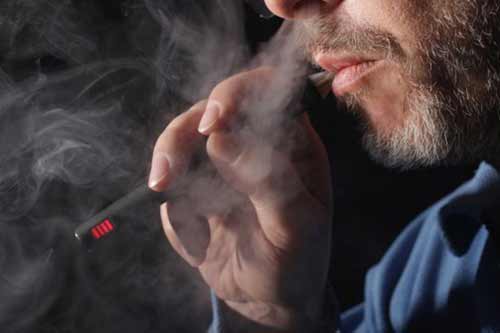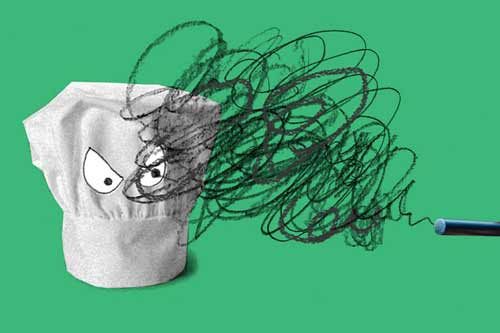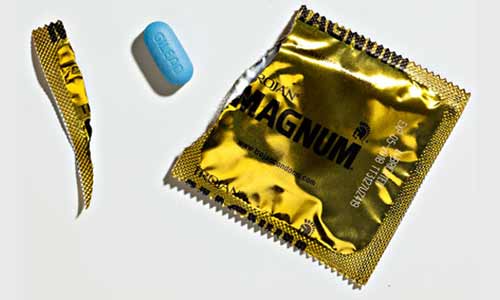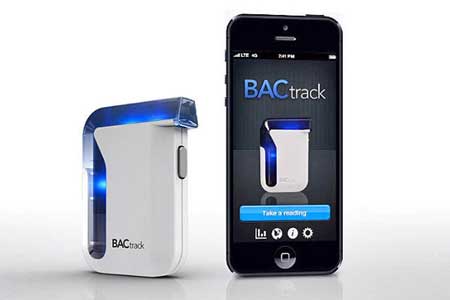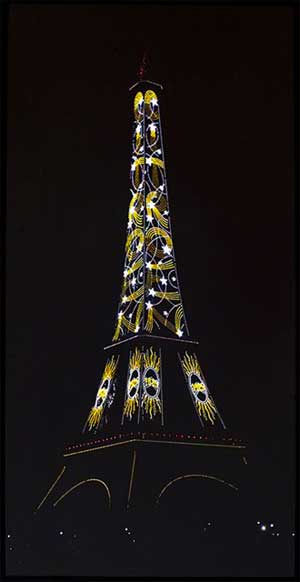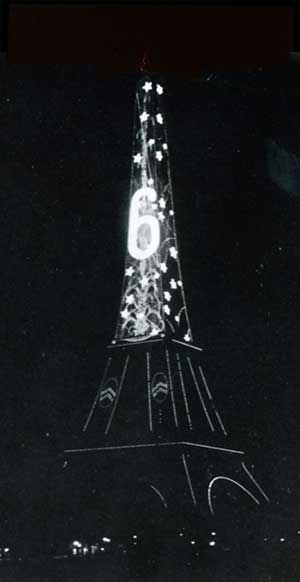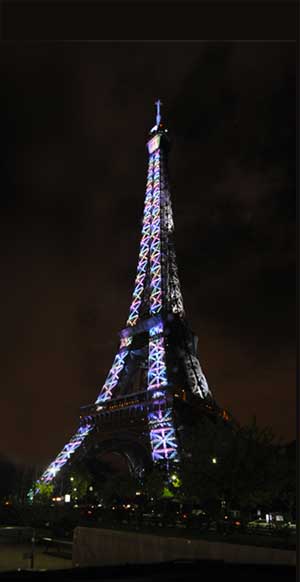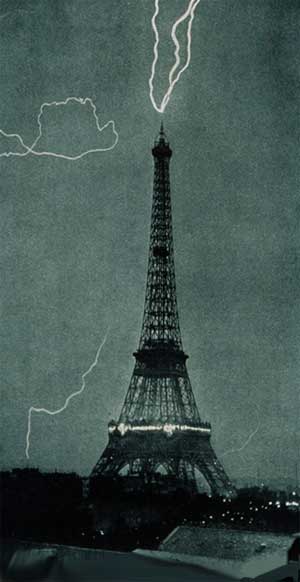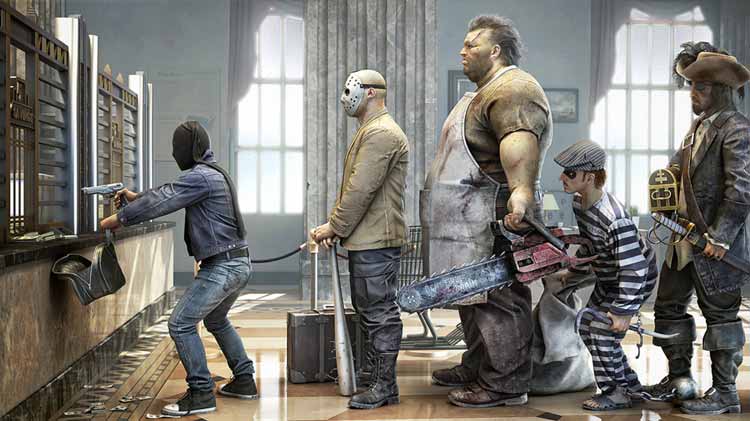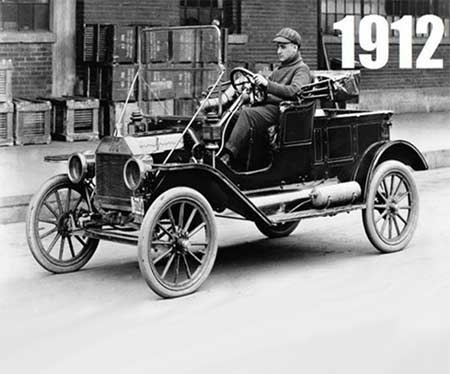I have found the world kinder than I expected but less just.
—Recreational Drugs and Social Expectations
Oct. 31, 2013
Tobacco’s Past
Tobacco is a broad-leafed plant that grows natively in North and South America. It’s in the same family as the potato, pepper and poisonous nightshade plants. The tobacco plant has a long history—growing it as a crop was pioneered by communities in the Andes sometime between 5000 and 3000 BC. South American tribes used it as insect repellent, to dress wounds, and as a pain killer; many early civilisations incorporated its use into sacred rites. Tobacco chewing was probably the first way it was consumed. Anthropologists have also speculated that snuffing—taking in powdered tobacco through the nose—probably pre-dated smoking. Snuffing tubes are among the earliest tobacco artefacts discovered in the Americas.
At high doses, tobacco can become hallucinogenic; accordingly, Native Americans didn’t always use the drug recreationally. Instead, it was often consumed as an entheogen (for spiritual effect); among some tribes, this was done only by experienced shamans or medicine men. Eastern North American tribes would carry large amounts of tobacco in pouches as a readily accepted trade item and often smoked it in pipes, either in defined ceremonies (considered sacred), or to seal a bargain. It was believed that tobacco was a gift from the Creator and that the exhaled tobacco smoke was capable of carrying one’s thoughts and prayers to heaven.
Christopher Columbus brought a few tobacco leaves and seeds with him back to Europe, but most Europeans didn’t get their first taste of tobacco until the mid-16th century, when adventurers and diplomats like France’s Jean Nicot—for whom nicotine is named—began to popularise its use. The early Spanish explorers were probably the first Europeans to try smoking tobacco. They wrapped crumbled leaves in corn husks to produce the forerunner of the cigarette. (Cigars, typically larger, are wrapped in a tobacco leaf.) As well as smoking tobacco, Spanish explorers cultivated plants in botanical gardens as a medicinal curiosity. The Spanish introduced it to Europeans about 1518 and by 1523 Diego Columbus mentioned a tobacco merchant of Lisbon in his will, showing how quickly the traffic had sprung up. It took until 1602 for the first English anti-smoking pamphlet, “A Counterblaste to Tobacco”, to be published. In 1610 Sir Francis Bacon noted he had found quitting his “bad habit” to be really difficult.
The first successful commercial crop was cultivated in Virginia in 1612 by Englishman John Rolfe. Within a mere 7 years, it was the colony’s largest export. Following the arrival of Europeans, tobacco became one of the primary products fuelling colonisation, and so also became the driving factor in the incorporation of African slave labour. It was tobacco that led to the importation of the colony’s first black slaves in 1619. Sir Walter Raleigh is credited with taking the first “Virginia” tobacco to Europe. By 1620, more than 40,000 pounds (18,000 kilograms) were being shipped to England.
The importation of tobacco into Europe was not without resistance and controversy. Sultan Murad IV banned smoking in Turkey in 1633; offenses were punishable by death. However, the negative health effects of tobacco were not initially known; in fact, most early European physicians subscribed to the Native American belief that tobacco was an effective medicine.
In 1776, during the American Revolutionary War, tobacco helped finance the revolution by serving as collateral for loans the Americans borrowed from France. Taking a pinch of snuff was made popular in Regency England by Beau Brummell, who introduced it to the Prince of Wales, making it popular in Royal circles and then among the population at large. Some monarchs enjoyed it (Queen Charlotte—wife of George III of England—was known as ‘Snuffy’ Charlotte). Others disliked it.
In Australia, by the early 19th century tobacco was an essential commodity routinely issued to servants, prisoners and ticket-of-leave men (conditionally released convicts) as an inducement to work, or conversely, withheld as a means of punishment. An observant traveller in the US South in 1865 said that in his belief 70% of all persons above the age of 12, both male and female, used tobacco in some form.
Cigarettes, which had been around in crude form since the early 1600s, didn’t become widely popular in the United States until after the Civil War, with the spread of “bright” tobacco, a uniquely cured yellow leaf grown in Virginia and North Carolina. The first cigarette rolling machine was produced in 1881 which operated at 13 times the speed of a human cigarette roller. Until 1883, tobacco excise tax accounted for a third of all internal revenue collected by the United States government and cigarette sales surged again with the introduction of “White Burley” tobacco leaf and the invention of the first practical cigarette-making machine in the late 1880s (sponsored by tobacco baron James Buchanan “Buck” Duke—after whom Duke University is named).
Murad Cigarettes were hand-rolled by the New York-based Greek tobacconist Soterios Anargyros. P Lorillard acquired the Murad brand in 1911 and sold them throughout World War I. Considering the fact that Sultan Murad made smoking a capital offence, the brand’s name is somewhat ironic.
The use of cigarettes exploded during World War I (1914-1918), where cigarettes were called the “soldier’s smoke.” By the early 20th century, with the growth in cigarette smoking, articles addressing the health effects of smoking began to appear in scientific and medical journals. In 1930, researchers in Cologne, Germany, made a statistical correlation between cancer and smoking. Eight years later, Dr Raymond Pearl of Johns Hopkins University reported that smokers do not live as long as non-smokers, but it was Nazi Germany that saw the first modern anti-smoking campaign; in 1941 tobacco was banned in various public places as a health hazard. Nevertheless, in other countries during World War II (1939-1945), cigarette sales were at an all-time high. They were included in a soldier’s C-Rations (as if they were food). Tobacco companies sent millions of cigarettes to the soldiers for free, and when these soldiers came home, the companies then had a steady stream of loyal customers.
By 1944, the American Cancer Society began to warn about possible ill effects of smoking, although it admitted that no definite evidence existed linking smoking and lung cancer. A statistical correlation between smoking and cancer had been demonstrated; but no causal relationship had been shown by that point. More importantly, the general public knew little of the growing body of alarming statistics. In the early 1950’s the dangers of asbestos were not highly publicised and asbestos was still seen as a natural wonder and a source of new and improved technology. P Lorillard decided to introduce blue asbestos (Crocidolite) into the filters on their Kent brand of cigarettes thinking that would enhance their protective ability, protecting the public from the dangers of smoking whilst at the same time improving sales. Kent micronite cigarettes become hugely popular and a large-scale marketing campaign was launched. With tag lines like “takes out up to 7 times more nicotine and tars—leaves in full, rich flavour”, millions of Kent micronite cigarettes were sold from 1952 to 1956. After increasing negative publicity, the makers of Kent micronite cigarettes commissioned two separate studies using electron microscopy to show that no Blue Asbestos fibres were entering smokers’ lungs. Unfortunately, studies revealed the opposite. The first two puffs through the micronite filter released 3.4 million Blue Asbestos structures or clumps of fibre. A smoker who consumed one pack of Kent per day for a year would inhale 1.242 billion such structures. The cigarettes were immediately discontinued after 4 years of manufacturing.
The Kent filter had been introduced shortly after publication of a series of articles in Reader’s Digest entitled “Cancer by the Carton” that scared American consumers into seeking out a filter brand at a time when most brands were filter-less. (Viceroy cigarettes had been the first to introduce filters in 1936.) The effect of this article was enormous: similar reports then began appearing in other periodicals, and the smoking public started to take notice. The following year, cigarette sales declined for the first time—but the tobacco industry was quick to respond. By 1954, major US tobacco companies had formed the Tobacco Industry Research Council (TIRC) to counter growing health concerns. With counsel from TIRC, tobacco companies began mass-marketing filtered cigarettes and low-tar formulations that promised a “healthier” smoke. A relieved (addicted) public responded, and soon sales were booming again.
The next big blow came in the early 1960s, with the formation of the Surgeon General’s Advisory Committee on Smoking and Health. Convened in response to political pressure and a growing body of scientific evidence suggesting a causal relationship between smoking and cancer, the committee released a 387-page report in 1964 entitled “Smoking and Health.” In unequivocal terms, it concluded that “cigarette smoking is causally related to lung cancer in men.” It said the data for women, “though less extensive, point in the same direction.” The report noted that the average smoker was 9-10 times more likely to get lung cancer than the average non-smoker and cited specific carcinogens in cigarette smoke, including cadmium, DDT, and arsenic.
The tobacco industry has been on the run—albeit profitably—ever since. In 1965, Congress passed the Federal Cigarette Labelling and Advertising Act requiring the Surgeon General’s warnings on all cigarette packages. So, because of negative press about tobacco, the major tobacco companies began to diversify their products. Phillip Morris bought into the Miller Brewing Company. RJ Reynolds Tobacco Company dropped “Tobacco Company” from its name and became RJ Reynolds Industries. It also began buy into other products such as aluminium. American Tobacco Company also dropped “Tobacco” from its name, becoming American Brands, Inc. In 1971, all tobacco-related broadcast advertising was banned. Phillip Morris continued to diversify, buying into General Foods Corporation and Kraft, Inc in 1985. RJ Reynolds bought Nabisco (of Oreo fame) and became RJR/Nabisco. In 1987, Congress banned smoking on all domestic flights lasting less than 2 hours. In 1990, smoking was banned on all domestic flights, except to Alaska and Hawaii and all interstate buses. In 1994, Mississippi filed the first of 22 state lawsuits seeking to recoup millions of dollars from tobacco companies for smokers’ Medicaid bills. Finally, in 1995, President Clinton announced plans to regulate tobacco sales and advertising (especially anything aimed at minors). Tobacco’s heyday was drawing to a close.
The Family Curse
12 July 1994 – Richard Joshua Reynolds III, namesake and grandson of the founder of the RJ Reynolds Tobacco Company, died of emphysema and congestive heart failure on 28 June in Pinehurst, North Carolina. He was 60 years old. His death was announced 12 July at a memorial service in Los Angeles, where his brother, anti-smoking activist Patrick Reynolds, blasted the tobacco industry and its influence in the US government. Reynolds said he had not announced the death previously because he didn’t want publicity at the services, and because his family objected to his attributing the death to smoking. However, he said, “There’s no doubt in my mind that my brother died from smoking. I spoke to his attending physician this morning and he confirmed that the emphysema was a direct result of years of smoking.”
Patrick Reynolds founded the Los Angeles-based Citizens for a Smokefree America, and favours a ban on cigarette advertising and a minimum age of 21 for tobacco purchases. Reynolds blasted the government and the “system of special interests” which prevents it from “properly regulating” tobacco like narcotics. He said legislators are “bribing each other in Washington“—that is, trading tobacco protection for health care reform votes. But, he said, “The story going around the world that R J Reynolds died from smoking will have a great impact.”
The Reynolds family has been decimated by tobacco-related diseases.
- R J Reynolds Sr chewed tobacco; he died of pancreatic cancer. (His wife died at 44, but I don’t know if she used tobacco products or not, though I know she worked for the company for a while. She died shortly after childbirth from an embolism.) R J and Katherine had 4 children, all of whom smoked. Of those, 2 definitely died from smoking.
- R J Jr smoked heavily and died of emphysema in 1964 at the age of 58.
- Nancy Susan Reynolds, who lived to be 75, smoked for at least a part of her life (otherwise she may have lived to be 90). She had one lung removed due to lung cancer, and died from emphysema in the other lung.
- Nancy’s daughter, Jane, died in 1988 from lung cancer caused by smoking.
- Mary Katherine Reynolds died of stomach cancer at 44 (the same age as her mother at death); it was thought to be linked to her cigarette smoking.
- Zachary Smith Reynolds died of a gunshot wound at 21 in a sensational scandal of the early 1930’s: Smith’s older wife, torch singer Libby Holman, whom he met while carousing with his father in New York, was indicted for his murder but was later released when she discovered she was pregnant. It was never proved whether Smith’s death was murder or suicide.
- Of R J Jr’s 4 wives, the first 3 smoked.
- Elizabeth McCaw “Blitz” Dillard died in 1961 at age 52 of colon cancer; her death may have been smoking-related (as she also had emphysema and heart disease). They had four sons.
- Richard Joshua “Josh” Reynolds III, who died from emphysema caused by years of smoking.
- John Dillard Reynolds, Zachary Taylor Reynolds, and William Neal Reynolds II about whom I could find little.
- Marianne O’Brien was a movie starlet under contract to Warner Brothers in the 1940’s. She too smoked (she took up the habit to please her husband), which probably hastened her death in 1985 from a “stomach aneurysm.” R J Jr and Marianne had two sons.
- Michael Randolph Reynolds, a lifelong smoker, who had emphysema before he died at 57.
- Patrick Reynolds, who smoked for a total of 10 years (“always the family product”), quit and afterwards publicly took a stand as a tobacco-free advocate.
- Muriel Maud Marston Laurence Greenough had no children, and died from smoking-caused lung cancer in 1980.
- Annemarie Schmitt is still living. She never smoked. She and R J Jr had one child, born two days after R J Jr died.
- Irene Sabine Reynolds is still living.
- R J III’s wife of 30 years, Marie, was a long-time smoker. She died of ovarian cancer a few months before his own death. R J III was too ill to attend her funeral.
According to one recent study, of the two billion smokers now in the developing world, fully 200 million are expected to die from smoking.
The Quick Fix
An e-cigarette is an electronic substitute in the form of a rod, slightly longer than a normal cigarette.
So, given how hazardous it’s now known to their health, why do smokers continue to smoke?
It’s not that they’re all hopeless addicts—many are capable of quitting. It’s not that they’re ignorant. Studies show that smokers are at least as informed as non-smokers about the risks of smoking—possibly more so. You might suspect, then, that smokers tend to be risk-takers by nature. Indeed, some evidence suggests that they do take more risks than non-smokers: they’re more often involved in traffic accidents, less likely to wear seat belts, and more likely to engage in risky sexual behaviour. Women who smoke even have mammograms less frequently than their non-smoking counterparts. But do smokers really have a greater tolerance for risk?
The personality trait that really seems to distinguish smokers from non-smokers is smokers’ relative inability to delay satisfaction and to respect long-term considerations (like health). In other words: poor self-control in the face of immediate temptation, not risk-taking per se drives smokers’ risky behaviour; it’s a weakness for activities that are generally profitable now, yet are likely to be hazardous eventually. This distinction may suggest strategies for fighting smoking. For example, hospitals and universities have started to ban smoking not only inside buildings but also at their perimeter; while originally proposed to address secondary smoking hazards, this has the benefit of imposing an additional short-term inconvenience on smoking. Such manipulations help sustain a smoker’s willpower to cut down or quit.
Tobacco plants contain the chemical nicotine that locks into particular molecular receptors in the outer membranes of certain animal nerve cells. Once there, it stimulates those cells in ways they were never intended to be stimulated. If the animal in question is an insect, the result is lethal—which, from the plant’s point of view, is a good outcome. But in bulky animals such as humans, a small amount of nicotine produces a pleasant sensation (though enough of the stuff can kill humans as well). Some researchers reckon nicotine to be no more dangerous than caffeine, which coffee plants similarly employ as an insecticide.
What Can You Expect?
This content requires Javascript and Adobe Flash Player.
Click to Begin
Nicotine has a second effect, though. It induces semi-permanent changes in the ways the nerves it stimulates talk to each other. The result is that those nerves are uncomfortable without it, and the owners of those nerves become addicted. Just how much nicotine an addict needs varies from person to person. The amount of nicotine a user needs is a consequence of which versions of a particular enzyme he has in his body—in other words, of his genetics. The enzyme in question is called, rather inelegantly, CYP2A6, part of a family of toxin-destroying enzymes known as the cytochrome P450s. One of its jobs is to convert nicotine into a less-harmful chemical called cotinine that can be excreted. The gene that encodes CYP2A6, however, comes in 3 varieties, each resulting in a different form of the enzyme. On top of that, some people lack the gene altogether. Those people with two copies of the commonest form of the gene (one copy inherited from each parent) smoke the most. Those individuals with rarer forms smoke less, and those completely without the enzyme smoke least. That, paradoxically, is because the commonest form of the enzyme is also the most effective at detoxifying nicotine while, of course, an absence of CYP2A6 means that the drug must be detoxified by other, slower, routes. In people with effective enzymes, nicotine vanishes rapidly, so they need more nicotine soon. The less effective the enzyme, the less nicotine is needed to keep drug levels up. So what natural selection favoured as healthy ended up killing a lot of smokers faster. (But then, there weren’t many tobacconists in the African savannah where humanity evolved.)
There may be a very good reason why coffee and cigarettes often seem to go hand in hand. Research suggests that nicotine’s power may be in how it enhances other experiences. For a smoker who enjoys drinking coffee, the nicotine may make the coffee taste even better. That may help explain why smoking is so hard to quit—people have very regimented things they do when they smoke—it occurs in very specific places, often with a specific group of people. If you get used to having that extra satisfaction from things you normally enjoy, not having nicotine could reduce the enjoyment in a given activity. People may not be smoking to obtain a pleasurable drug state but to regulate mood; this effect could make nicotine more addictive than other drugs.
Enter the electronic cigarette.
It feels like a cigarette, looks like a cigarette but isn’t bad for health (certainly not as bad). A Chinese company marketed the world’s first “electronic” cigarette in 2003. Golden Dragon Group Limited’s Ruyan cigarettes were battery-powered, cigarette-shaped devices that delivered nicotine to inhalers in a bid to emulate actual smoking. “The nicotine is delivered to the lungs within 7 to 10 seconds,” said a representative of the Beijing-based firm that first developed the electronic cigarette technology, which is now controlled by Golden Dragon. It feels like a cigarette, looks like a cigarette, and even emits vapour. In many ways, it’s like an actual smoking experience. Sales increased more than 10-fold a year after the technology was perfected. China has 400 million smokers; around 10% of them are trying to quit at any given time, though only 2% of those are actually successful.
Henley Vaporium is one of New York City’s newest e-cigarette lounges. It’s in downtown Manhattan. The Henley Vaporium is backed by 4 private investors who’ve been distributing e-cigarettes for the past 2½ years. Occupying a sprawling space by Manhattan standards, it stocks a wide range of e-cigarette products, including the company’s own Henley brand of disposable and rechargeable iterations, and over 80 flavours of nicotine-loaded vapour. There’s none of the dark wood and polished brass of a cigar bar here; the Henley Vaporium is clearly aimed at a younger and more health-conscious set, stocked with recycled furniture and with plans to soon start selling cold pressed juices. It aims to open at least two more stores in the New York area by March next year.
The first New York store exclusively devoted to e-cigarettes, VapeNY, opened in July. Goldman Sachs estimates that e-cigarette retail sales already totalled $1 billion last year and could reach $10 billion by 2020; by then it estimates e-cigarettes could account for 16% of the US tobacco industry’s profits. And unlike the big tobacco oligopoly, the e-cigarette industry remains “highly fragmented” though a handful of companies already dominate. Privately owned NJOY (which has former US Surgeon General Richard Carmona on its board) and Blu (which was bought by tobacco giant Lorillard last year for $135 million) are among the biggest players. Big Tobacco is belatedly getting into the game: Altria and Reynolds America, which collectively control an estimated 75% of US cigarette sales, are both in the process of launching e-cig products. E-cigarettes—which contain nicotine, but no tobacco—currently fall outside smoking laws. But this could soon change, with New York City and the US Food and Drug Administration both reviewing the technology.
If e-cigs continue to grow in popularity, it could hasten the demise of traditional cigarettes. They also promise fatter profit margins, because they’re not taxed as aggressively as traditional cigarettes, nor do they have to fund legal settlements. Moreover, because e-cigarette devices are rechargeable, they can be sold in much the way that companies such as Gillette sell razor blades—subsidise the cost of the basic device but make a healthy profit on the cartridges. As a result, Goldman estimates that e-cig businesses could eventually achieve profit margins in excess of 50%, compared to 30% for traditional cigarettes. Whether major tobacco manufacturers do well out of this remains to be seen—some were late coming to the table.
You Want Limits with That?
New York City Mayor Michael Bloomberg doesn’t just want to limit the use of cigarettes but electronic cigarettes, too. The new definition of “tobacco products” under city law would be changed to include e-cigarettes and related components, parts and accessories. While tobacco and menthol flavoured e-cigarettes would still be available in retail stores, all other flavoured e-cigarettes could only be sold in age-restricted “tobacco bars.” (The original version of the bill, drafted by the Health Department by request of Mayor Bloomberg, didn’t include any position on e-cigarettes.) The bill’s changes also include raising the legal age for buying tobacco to 21, and creating a higher price floor for cigarette packages. The documents were leaked by the Consumer Advocates for Smoke-free Alternatives Association (CASAA), an advocacy group aimed at raising awareness and protecting rights to access reduced-harm alternatives. They argue that electronic cigarettes are far less harmful than regular cigarettes and have helped many former adult smokers to quit smoking by switching to these less-harmful alternatives.
Many studies have shown that e-cigarettes are far less likely to damage health than the traditional version. The chair of the Royal College of Physicians Tobacco Advisory Group, says if all smokers in Britain stopped using cigarettes and started on e-cigarettes, it would postpone 5 million deaths in people who are alive today. But though everyone agrees e-cigarettes are a better alternative, they’re not without side-effects. Users who inhale too deeply may inhale some of the liquid nicotine instead of vapour, which could make the dose unsafe. Although there’s no evidence that nicotine causes cancer, it’s still a toxin, is extremely addictive, and is known to have an effect on the cardiovascular system and blood sugar levels. Headache, high blood pressure, even heart arrhythmia are all side-effects of taking too much nicotine into the bloodstream. E-cigarettes are not suitable for pregnant women because nicotine passes through the placenta. The chief executive of the British Lung Foundation says that there are concerns over the range and safety of some of the additive ingredients found in the vapour that users inhale.
The UK body that oversees the regulation of medicines says the e-cigarettes currently available don’t meet appropriate standards of safety, quality and efficacy; there are plans to regulate them as medicinal products by 2016. Another issue is whether e-cigarettes effectively support tobacco smoking by helping smokers maintain their habit in places that ban smoking. Should the devices be treated like real cigarettes or viewed as a socially acceptable alternative for those looking to kick the habit? Whether e-cigs pose any major health risks is still unclear: some studies say that nicotine isn’t particularly harmful to the user; some health officials say more research needs to be done to find out what exactly is in the oil and what is being inhaled. And the rules and etiquette about where and when to use them are equally murky. Meanwhile, New Jersey already bans the use of e-cigarettes in indoor public spaces throughout the state, and other cities around the country are considering doing the same. The market currently is unregulated, but new rules could affect how the devices are sold—and how they’re advertised.
NY’s Metro-North and the Long Island Rail Road have both banned e-cigarettes on trains and platforms. The Metropolitan Transportation Authority hasn’t issued an official ban for subways yet, but use of the devices there is discouraged. And while a Transportation Security Administration spokesman says you can bring e-cigs through airport security, many airlines have enacted bans on using them in planes. Meanwhile, restaurant and bar owners are scratching their heads—some spots encourage their use; others outright ban them. (One bouncer says it’s too hard to tell the difference between nicotine vapour and what’s produced by hand-held marijuana vaporisers, which are illegal.) According to a study released this summer by a School of Public Health: “By the standards of occupational hygiene, current data do not indicate that exposures to vapours from contaminants in electronic cigarettes warrant a concern.” Still, researchers did note more study was needed to look at long-term second-hand effects. And while the nicotine in e-cigarettes is addictive, it doesn’t contain harmful additives such as cyanide and formaldehyde found in regular cigarettes. “[Nicotine is] not harmful in and of itself,” says the director of the Centre for Tobacco Control in Great Neck, NY. “Except that it’s the chemical that keeps people addicted to smoking. It’s not the one that causes all the heart disease.” Vapour can, however, contain a scent, so a room full of e-cig users can smell like vanilla, blueberry or mango. It stays on your skin a bit if you’re in a vape-heavy setting, and can tickle your throat a bit, too. But vapers say the scent is comparable to any other urban odour such as perfume.
Electronic cigarettes use heat to warm up liquid containing nicotine, which smokers inhale as vapour.
The American Cancer Society calls the spread of e-cig use “intriguing,” but isn’t quite ready to endorse its use until the FDA weighs in. “We’re certainly keeping our eyes on it,” says the director of international cancer control for the American Cancer Society. “We’d welcome anything that would continue to help people stop smoking.” But detractors say that after decades of forcing nicotine users into the margins of society, e-cigs could welcome them back to the dinner table. Nicotine refills are available in flavours such as watermelon candy, root beer and juicy fruit. That has some parents concerned that kids will be sucked into the allure of the new trend. A Centers for Disease Control and Prevention study found that the percentage of high-school and middle-school students who’ve tried an e-cig more than doubled in the past two years—some had never tried a traditional cigarette. Many local shop owners say they self-regulate and won’t sell to minors, but since the FDA has yet to weigh in, anyone can buy them online or elsewhere. Talk to e-cig users, and they’ll almost universally praise how switching to the devices helped them “quit” puffing all the carcinogens and tar in regular cigarettes. But “quitting” seems like a stretch for a habit that still has them sucking in nicotine—often more frequently than they once walked outside to have a cigarette. Are they kidding themselves?
The consensus of medical research today is that while electronic cigarettes are healthier than tobacco cigarettes, and a good way to end dependency on tobacco, they aren’t without health risks. Besides the nicotine, the other active ingredient is propylene glycol, a substance the FDA classifies as GRAS, or “generally recognised as safe.” But there’s a catch. Most research about propylene glycol is about its effect when it’s ingested as an additive in food. Less is known about the effects of inhaling it as a vapour—dozens and dozens of times a day. “The safety and efficacy of e-cigarettes haven’t been fully studied,” says the FDA on its website, and consumers “have no way of knowing … how much nicotine or other potentially harmful chemicals are being inhaled during use.” Krave, a Miami-based company that makes e-cigarettes, doesn’t go into much detail on its website about the health effects of its products, except to say that they contain nicotine (“a chemical known to the State of California to cause birth defects or other reproductive harm”) and propylene glycol (“on the safe elements list of the Food and Drug Administration”) and are “not an aid for smoking cessation.” Krave does stress that the e-cigarettes are “revolutionary” and “innovative.” The medical director of the Mayo Clinic’s Tobacco Quitline, was far more incendiary. “It comes out of China. It’s unregulated. There’s a lot of evidence that products vary from cartridge to cartridge.”
The inhalation of propylene glycol is hardly unheard of. Propylene glycol has been used as the base for fog machine liquids and in nebulisers for decades. It’s even used as the main ingredient for a smoking cessation aid, Nicorette Quickmist, which has already gained regulatory approval in Canada and the United Kingdom. QuickMist users not only inhale the propylene glycol mist, but are instructed to spray the mist away from their mouths—potentially exposing bystanders—several times prior to usage. If propylene glycol is toxic, would health authorities in the UK and Canada give their stamp of approval to this product? (I don’t know—would it benefit them?) Numerous cough syrups, nasal sprays, and injectable pharmaceuticals contain propylene glycol. (For those already addicted to actual cigarettes—the kind responsible for hundreds of thousands of deaths each year—please don’t let the comments about propylene glycol keep you from giving e-cigarettes a try. Overly strict regulations could snuff out a new industry with the potential to save smokers from a lot of harm. But if you aren’t already addicted to nicotine, why start?)
Restrict It? Or Not?
Here’s what some of New York’s most prominent chefs and restaurateurs have to say about e-cigarettes:
- “It happened once last week in the lounge; we let the person smoke. It’s not happening enough for us to have a policy yet. It’s totally new. I’m sure if we see more and more people using them, we’re going to have to decide what to do. Do we accept it or not? Personally, I don’t find it elegant. It’s weird to see someone smoking with a plastic cigarette.”
- “We kindly ask that guests don’t smoke electronic cigarettes at our restaurants in New York City, as we find it disruptive to other diners. We try our best to create a comfortable dining service for all of our guests.”
- “It’s not something we encounter very often, though I know it’s becoming more and more popular. Currently we don’t encourage it, but we do allow it as long as it doesn’t bother other customers.”
- “It’s kind of a new thing. My gut reaction would be to say smoking is smoking. I probably would tell you we don’t have a policy; we do it on a case-by-case basis. If it’s not going to bother anyone, I don’t think we should have a rule, but if someone were to complain, we’d ask the person not to smoke.”
- “We do not allow them indoors or outdoors. To me it’s a distraction and intrusive, no different than if someone were playing music from their iPhone on the speaker function. Anyone smoking an e-cigarette is forcing their desires and interests on others in a manner which the other party may not enjoy. It’s the responsibility of the restaurant to try to balance and consider the interests of all guests against those of a few.”
- “We don’t mind them. We’ve actually had a few guests ‘light up’ in the dining room.”
- “It’s never come up. We wouldn’t allow it during the meal. We’d probably ask them to go outside. It’s a relatively small space and there’s kind of an odour to them. It’s not disgusting—it smells like steam and weird flavour. But if it’s at the end of the meal, and we’re done with service and there’s no more food around, and people are on their way out, I probably wouldn’t have a problem with it.”
And customers?
- Nicotine is a harmful poison and anyone suffusing nicotine-infused vapours into the air near me while I’m eating, is spraying poison into my breathing space. It’s obnoxious and I wouldn’t pay for my meal at any restaurant that allows anyone to e-smoke near me. If, after I asked it stop, it were allowed to continue, I would walk out … WITHOUT paying.
- Nicotine is not a carcinogen, there’s no proof it causes cancer in other words. The “smoke” that comes out of it isn’t second-hand smoke like from cigarettes. It’s just water vapour out the other end, like being around people breathing, in fact it’s better because you don’t know if people breathing on you are sick or not. It’s called Public, not Private. If you can’t stand people, please stay home.
- Potatoes contain nicotine, eggplant contains high doses of nicotine, green tomatoes contain nicotine; as a matter of fact, there are a total of 66 plants that contain nicotine. You ingest it every day. It’s been proven that nicotine isn’t a carcinogen and it’s not toxic in any way. Its effects and side-effects are equivalent to those of caffeine. Nicotine has even been used to treat dementia, Alzheimer’s, and a few other diseases at this time. So to play up nicotine as this extremely dangerous drug that’s going to kill you dead if you get within 10 feet of it makes you look like a real idiot. Just saying…
- Here’s a tip e-cig users: Buy the batteries with the “stealth” tips (no light), palm the thing so nobody sees it, then hold the vapour in your mouth for a couple of seconds before exhaling. No one will ever know. I’ve used mine in retail stores, restaurants, movie theatres and work and never had a problem.
Any Conclusions?
A growing pile of studies say e-cigarettes are far safer than normal cigarettes and at least as good at getting people to quit smoking as nicotine patches and gum. But they too are based on that addictive substance. Churned out by hundreds of suppliers using materials from China and elsewhere, the quality and labelling of e-cigarettes on sale are uneven. One worry is that young people will be lured into a dependence on nicotine they would otherwise have avoided—though so far the numbers who have never smoked cigarettes but have become regular users of e-cigarettes are quite small. Another concern is that smokers who might have quit their expensive and inconvenient habit will carry on, switching to e-cigs in places where smoking is banned—though some studies suggest e-cigs do encourage them to smoke tobacco less frequently. A third fear is that these strangely trendy products will re-glamorise smoking after years of campaigns, tax increases, and restrictions have relegated it to the doghouse.
One approach is simply to tighten manufacturing and product standards, or bring in a specific set of rules rather like those governing cosmetics. But there are other considerations. Electronic smokes compete with cigarettes yet (in most places) don’t face the same restrictions or excise taxes. They compete with smoking-cessation products yet don’t (usually) have to secure prior product approval, nor meet pharmaceutical standards. If required to do those things, the price will rise, variety will fall, and the uptake by consumers (at this point overwhelmingly tobacco smokers) will drop. The staid tobacco industry is beginning to wonder if it’s reached a “Kodak moment” (when the world’s leading maker of camera film realised consumers had gone digital and it was too late to go chase them). To avoid that fate, tobacco firms have taken stakes in e-cigarette companies or developed their own products. They’re working on other sorts of less-toxic offerings too.
Philip Morris International expects to market a device to heat rather than burn tobacco by 2017. Next-generation products at British American Tobacco include a nicotine inhaler, for which it hopes to get regulatory approval in Britain. Whichever way consumers and regulators jump, the tobacco giants intend (unlike Kodak) to have a product to peddle. The suggestion is that e-cigs should be treated as cigarettes, but for what reason? Because they contain nicotine? Or because governments need to recoup revenue from declining cigarette sales? Passive smoking is dangerous, passive vapeing (e-smoke) isn’t so much. The debate is really about how the state justifies transferring a sin tax onto a product which doesn’t have collateral economic health and work loss damage of billions of dollars, which actual smoking causes.
Nevertheless, It Pays to Be Careful
“It sounded like a bomb. My walls rattled. It shook the house up. I screamed. It was a real freak out moment.” These are the words of a woman who claims an electronic cigarette she bought with the idea in mind of getting healthy, instead exploded, shooting flames across her living room and charring her sofa and rug. She used the rag in the picture above to protect her hand when she removed the e-cigarette from her computer’s USB port where it had been charging. “If I hadn’t had been home, I would’ve lost my dogs, my cats, my house,” she told a reporter. But the proprietor of a nearby e-cigarette shop downplayed the event. “Anything that’s electronic and needs recharging, you have the potential for it to catch fire. I don’t leave my dishwasher running when I leave home.” According to e-cigarette trade association figures, there are roughly 3.5 million recharging devices in use.
Fire officials have warned that e-cigarette users are leaving their devices to charge too long. Unlike other battery-operated equipment, such as cellphones, e-cigarettes don’t have an inbuilt default setting to switch off once the battery is full. “Those lithium-ion batteries don’t have an overcurrent protection to them, so they continue to draw until the coil overheats and the lithium-ion actually explodes in the unit,” said one Fire Department Division Chief. One man’s e-cigarette exploded from his in-car charger onto the backseat, which was almost destroyed by the ensuing fire. A toddler escaped a car fire with only minor injuries after his mother’s e-cigarette overheated and projected onto the backseat. The coil bounced off the ceiling and into the car seat of her son. She was able to douse the fire with her iced coffee drink.
Many e-cigarette suppliers provide chargers with a cord that has a USB plug and an AC adapter. Never use an adapter that isn’t made specifically for an e-vape device! The USB plug makes it tempting for many consumers to plug their device into car adapters, laptops, computers, and video game consoles, but this is something they should never do. An adapter that isn’t designated for an e-vape device can cause explosions. Safety experts advise e-cigarette users to always keep an eye on their chargers’ lights, and unplug the AC adapter once the e-cigarette battery is fully charged. Safety educators say e-cigarette users should never leave their devices unattended. They recommend using a fireproof safety bag when charging. In addition, the nicotine liquid inside electronic cigarettes can be dangerous. A drop of undiluted nicotine on the skin can be deadly. In May, a two-year-old girl died in Israel after ingesting e-cigarette liquid.
Pleasures Undeferred
President Obama was caught casually inserting a piece of Nicorette gum into the First Mouth. Obama has a well-documented history of using the gum to stave off his smoking urges, but it’s rare to catch him getting his nicotine fix in public. Ever-conscious of the many cameras that capture his every move, Obama waited for just the right moment—during an event honouring former President George H W Bush—when it seemed likely that no network in the world would be focusing on the current president. But the producers had transitioned to a presidential split-screen at that very moment. In a mere instant, the president exhibited the requisite sleight of hand of a world class Nicorette consumer. He apparently never looked down while his hand shed the single unit of gum from its tinfoil and plastic casing and approached his mouth as if to touch his face in thoughtful contemplation. Obama’s middle finger ran the length of his lower lip as he wiped away at some fictional annoyance, exuding the confidence of a man satisfied that he had evaded notice.
No effort was made to reach out to the White House for comment.
Methadone
Methadone is a synthetic opioid mainly used in the treatment of opioid dependence. It has cross-tolerance (tolerance to similar drugs) with other opioids including heroin and morphine, and offers very similar effects, but a longer duration. (And it doesn’t deliver the same degree of buzz or high as heroin.) Oral doses of methadone can stabilise patients by mitigating opioid withdrawal syndrome or making it more tolerable. Higher doses of methadone can block the euphoric effects of heroin, morphine, and similar drugs. As a result, properly dosed methadone patients can reduce or stop altogether their use of these substances.
Methadone was introduced into the United States in 1947 by Eli Lilly and Company. In Germany, the annual cost per patient is less than £3,000, while heroin assisted treatment costs up to £10,000 annually. Methadone clinics in the US charge anywhere from $5–400 per week, which may be covered by private insurance or Medicaid.
Unfortunately, abuse of methadone results in about 5,000 overdose deaths per year in the United States alone.
A Pill to Prevent AIDS
The gay 40-something well-known New York City doctor with many gay patients—let’s call him Dr John—can barely talk freely about what he’s doing. “It’s telling, how reluctant I am to talk about this, even anonymously,” he says. “This isn’t being talked about in our community at all.” The subject causing him anxiety is an oval blue pill called Truvada, which he takes once a day—not to treat HIV, but to keep him from getting it. It’s even covered by his insurance, thanks to a decision by the FDA last year to approve it as a prophylactic against HIV when a study found that HIV-negative gay men who faithfully adhered to a one-a-day regimen of Truvada reduced their risk of getting HIV by more than 99%. HIV specialists had been keenly awaiting this for several years.
Sexually active with multiple partners, Dr John admits that he himself avoids condoms about 20% of the time. Since he started taking daily Truvada, or PrEP (Pre-Exposure Prophylaxis) as the regimen is called, he’s remained HIV-negative and has experienced no side effects from the drug. So why isn’t he shouting about PrEP from the rooftops? He doesn’t want people to think that because he’s a doctor, he’s endorsing PrEP for everyone: “There’s a difference between giving medical advice and making individual choices.” But his reluctance is deeper than that—he doesn’t want to be judged for eschewing condoms from time to time. “Gay men talking about not using condoms is really stigmatised,” he says. “Most of us have never known sex without condoms or else without threat of a ‘deadly disease.’” Even though PrEP is the first proven new HIV prevention tool since the condom, and even though it’s FDA-approved and is widely covered by health plans, few gay men appear to be on it. “The uptake has been extraordinarily slow.” Why?
Part of that is simply PR—not enough people even know what it is. Why not go full throttle to boost sales of PrEP? Many are concerned that widespread PrEP use will lead to an explosion of unprotected sex in gay men. One group in particular, the Los Angeles–based AIDS Healthcare Foundation, has taken a vocal stance against the FDA approval of PrEP, creating posters and other media warnings against it. The group’s president, says it’s wrong for the FDA to have approved Truvada for PrEP when the study showed that a large percentage of participants failed to take it once daily as prescribed. “It gives people a false sense of security,” he says. If someone takes PrEP spottily, they lower the amount of the drug in their body, exposing themselves to HIV. There’s also the possibility of developing resistance to Truvada, thus losing it as an HIV treatment option.
[This sounds akin to the argument against allowing convenient use of e-cigarettes.]
Even if PrEP protects against HIV, condom-less sex still invites other STDs. Some, like syphilis, gonorrhoea, and herpes, are fairly easily treatable. But in recent years, there’ve been outbreaks among HIV-positive men of sexually transmitted hepatitis C, for which treatment is improving but still difficult, expensive, and imperfect. In certain parts of the world, such as Japan and India, a new antibiotic-resistant strain of gonorrhoea has rung alarm bells of a new STD epidemic. Simply put, nobody knows what new infections lie in wait down the road. PrEP advocates say it’s far safer to be on Truvada for a period of time than to live with HIV for a lifetime. Even well-treated HIV has been shown to have myriad effects on health in the long-term, such as accelerated ageing.
The cost of Truvada wasn’t mentioned in the article I read, so I checked online. The price per pill is $45, or a month’s supply for US$1,350. If it’s covered by insurance, if everyone begins taking it, either the price will drop or insurance coverage will slow or stop. Lower dosages are cheaper, but it’s unclear when lower dosages are called for. Side effects include a build-up of acid in the blood and serious liver problems, especially if you’re female, obese, and/or have been taking Truvada for a long time. It may become available as a generic product after September 2021.
Does a Buzz Need a Cost?
What is non-alcoholic and non-toxic but gives you the buzz of a beer? Synthetic alcohol, according to the government’s senior drugs adviser of the Brain Sciences Division at Imperial College, London. This alcohol-free substitute has a chemical structure similar to benzodiazepine, a class of psychoactive drugs that treat anxiety and insomnia. The as-yet-unnamed drug can produce alcohol’s desirable effects such as sociability and relaxation, without negative effects such as nausea. “We can get rid of most of the toxicity. We’ll have a compound maybe 100 times safer than alcohol,” claims the adviser. This means less damage to the heart and liver, but it also lets you wake up fresh. “Because it targets a specific receptor in the brain, we can reverse the effects if people want to drive home.” The antagonist could come in the form of a pill, or a dissolvable film that is placed under the tongue. The compounds are being tested on human subjects and may be on sale within two years. It would cost the same as a cocktail.
Computers Sometimes Save Us from Ourselves
Before getting behind the wheel after a night out, a driver can test his blood alcohol level with new apps that not only give a reading but can call a cab. Breathometer for iPhones and Android smartphones, and BACtrack for iPhones display a user’s blood alcohol level within seconds on smartphone-connected breathalysers. People think, “Oh, I’m only driving around the corner,” but it’s not until they get pulled over that they realise they’re over the limit.
More than 1.2 million people were arrested in the US in 2011 for driving under the influence of alcohol, according to FBI data. The Breathometer plugs into a smartphone’s headphone jack, and the user blows on the device. The Bactrack connects to the iPhone via Bluetooth. Both use sensors that meet US FDA standards and can detect blood alcohol levels to an accuracy within 0.01%.
Breathalyzers have been around since the 1950s. By pairing them with smartphones and making them smaller and more cost effective, more people will make use of them. Breathometer’s breathalyser is the size of a car key and fits into a pocket or on a keychain. The app can detect a user’s GPS location, order a cab if the user can’t drive home, and estimate how long it will take for the user to become sober. “Just checking blood alcohol levels can help you be more aware of your body. If you blow 0.02% or 0.04% you might think, 'I better stop drinking,’” said Breathometer’s chief executive. In all 50 US states, a blood alcohol level above 0.08% is considered drunk driving. The National Transportation Safety Board is recommending the limit be reduced to 0.05%.
More than 10,000 people died in drunk driving accidents in the US alone in 2010, according to the National Highway Traffic Safety Administration. The Breathometer app reads signals after the user has blown into the breathalyser. An ethanol sensor embedded in the device detects alcohol on the breath and converts this into a signal, which the app processes. The app costs $49. San Francisco-based BACtrack’s breathalyser, which includes a mouthpiece, costs $150. The app also tracks a user’s drinking habits in a graph, and can estimate when the user’s blood alcohol level will return to zero. Users can share their blood alcohol levels through text message, Facebook or Twitter. [Apparently there is nothing anymore that can’t be—and isn’t—shared…]
Birds Use Nicotine to Kill Bugs
Oddball birds surprised British experts by using smouldering cigarette to kill parasites on their wings. The rooks swoop onto tracks at a Devon railway station and place their wings over the smoke—presumably to fumigate them. One commuter said, “I noticed the rooks because they’re not usually found in towns. They generally flapped about when a chap flicked a cigarette butt onto the track. It was still [lit] and one of the rooks swooped down and picked up the butt with its beak, flew around and landed on the platform, danced around with this smoking cigarette in its beak—looking quite comical. But then it dropped the butt on the platform and pulled its wings over it, collecting the smoke. It seemed as if it were using the smoke to rid itself of perhaps ants or something similar. Five minutes later another rook—or perhaps the same one—swooped in when another cigarette was flicked away and repeated the whole thing.”
A Royal Society for the Protection of Birds spokesman said the birds must have learned that cigarettes can kill mites and other parasites. “You have to be careful attributing behaviour but it would seem fumigation is the most likely conclusion. Rooks are very intelligent.”
New evidence suggests that some bird species in cities are keeping their nests warm and pest-free by lining them with cigarette butts, research at St Andrews University has suggested. The nicotine and other chemicals in discarded filters act as natural pesticides that repel parasitic mites. At the same time, the cellulose butts provide useful nest insulation. The more butts were found in a nest, the fewer mites were discovered to be infesting them.
Sources
http://www.telegraph.co.uk/science/science-news/3296193/A-quick-smoke-Its-good-for-the-wings.html “A Quick Smoke? It’s Good for the Wings” from The Telegraph, 2 June 2008.
http://www.oracleasbestos.com/asbestos-cigarettes/ “Asbestos Cigarettes” from Oracle Solutions.
http://www.bbc.co.uk/news/uk-scotland-edinburgh-east-fife-20607413 “Birds use cigarette butts to line nests, St Andrews University study finds” from BBC News, 5 December 2012.
http://www.tobaccofree.org/famobit.htm “Death from Smoking in the R J Reynolds Family” by Patrick Reynolds, Tobacco Control Magazine, Spring 1995, published by TobaccoFree.org.
http://www.foxnews.com/health/2013/08/09/does-nyc-mayor-bloomberg-want-to-ban-e-cigarettes-too/ “Does New York City Mayor Bloomberg want to ban e-cigarettes too?” from Fox News, 9 August 2013.
http://www.businessweek.com/articles/2013-09-11/e-cigarettes-at-dinner-no-problem-at-these-top-smoke-free-restaurants “E-Cigarettes at Dinner? No Problem at These Top Smoke-Free Restaurants” by Ryan Sutton, Business Week, 11 September 2013.
http://nypost.com/2013/09/19/e-cigs-catch-on-citywide-and-face-a-big-backlash/ “E-cigs catch on citywide—and face a big backlash” by Tim Donnelly, New York Post, 19 September 2013.
http://edition.cnn.com/US/9705/tobacco/history/ “A Brief History of Tobacco” from Edition, CNN.
http://www.eurekalert.org/pub_releases/2008-09/ksu-kpr090308.php “Cigarettes’ Power May Not Be in Nicotine Itself” from Eureka Alert, September 2008.
http://ca.news.yahoo.com/feeling-tipsy-apps-read-blood-201056792.html “Feeling Tipsy? New Apps Read Blood Alcohol Levels, Hail a Taxi” by Natasha Baker, Yahoo! News, Reuters, 16 September 2012.
http://academic.udayton.edu/health/syllabi/tobacco/history.htm#begin “History of Tobacco” from Boston University Medical Center.
http://en.wikipedia.org/wiki/History_of_tobacco History of Tobacco from Wikipedia.
http://en.wikipedia.org/wiki/Kent_%28cigarette%29 Kent (cigarette) from Wikipedia.
http://www.jti.com/about-tobacco/history-of-tobacco/ “History of Tobacco: The Leaf that Travelled the World” by JTI (Japan Tobacco plus the non-US operations of tobacco R J Reynolds).
http://www.out.com/news-opinion/2013/09/09/hiv-prevention-new-condom-truvada-pill-prep “Is This the New Condom?” by Tim Murphy, Out, 9 September 2013.
http://www.economist.com/news/business/21586867-regulators-wrestle-e-smokes-tobacco-industry-changing-fast-kodak-moment “Kodak Moment” from The Economist, 28 September 2013.
http://en.wikipedia.org/wiki/Methadone Methadone from Wikipedia.
http://www.thedailybeast.com/articles/2013/01/31/my-electronic-cigarette-addiction.html “My (Electronic) Cigarette Addiction” by Eli Lake, The Daily Beast, 31 January 2013.
http://www.economist.com/news/leaders/21573986-world-should-welcome-electronic-cigarette-no-smoke-why-fire “No Smoke. Why the Fire?” from The Economist, 23 March 2013.
http://www.dailymail.co.uk/news/article-2442715/E-cigarette-explosion-causes-Wisconsin-home.html “No smoke, but lots of fire! Another e-cigarette explosion smoulders home as officials warn you don’t need to 'light up’ to be in danger” by Joel Christie, Mail Online, 3 October 2013.
http://dailycaller.com/2013/07/15/obama-casually-pops-nicorette-during-white-house-ceremony-video/ “Obama casually pops Nicorette during White House ceremony” by Vince Coglianese, The Daily Caller, 15 July 2013.
http://en.wikipedia.org/wiki/R._J._Reynolds R J Reynolds from Wikipedia.
http://archive.tobacco.org/News/94.07.23_tob_news.html “People: Obituary: R J Reynolds III, 60” by Gene Borio, Tobacco BBS “http://www.tobacco.org”:http://www.tobacco.org.
http://carolinahistory.web.unc.edu/the-reynolds-family-and-the-camel-city/ “The Reynolds Family and the Camel City” from North Carolina History Projects, University of North Carolina, 2013.
http://www.economist.com/node/5436851 “Smoking out the Truth: Why Some People Smoke More than Others Do” from The Economist, 26 January 2006.
http://www.wired.co.uk/magazine/archive/2013/01/start/alcohol-without-the-hangover “Synthetic alcohol: booze without the hangover” by Sam Scott, Wired magazine, 27 January 2013.
http://qz.com/135487/this-new-york-vapor-bar-offers-80-flavors-of-e-cigarettes-and-none-of-them-is-from-big-tobacco/ “This New York Vapour bar offers 80+ Flavours of e-Cigarettes, and None of Them Is from Big Tobacco” by John McDuling, Quartz, 16 October 2013.
http://www.economist.com/blogs/economist-explains/2013/06/economist-explains-11?zid=318&ah=ac379c09c1c3fb67e0e8fd1964d5247f “Who Opposes e-Cigarettes, and Why?” from The Economist Blogs, 17 June 2013.
http://www.nytimes.com/2013/07/28/opinion/sunday/why-smokers-still-smoke.html “Why Smokers Still Smoke” by Eyal Ert and Eldad Yechiam, The New York Times Sunday Review, 26 July 2013.
http://www.breitbart.com/InstaBlog/2013/09/03/Woman-Claims-E-Cigarette-Exploded-Shot-4-Foot-Flames-Across-Living-Room “Woman Claims E-Cigarette Exploded, Shot 4-Foot Flames Across Living Room” by Jon David Kahn, Breitbart: The Conversation, 3 September 2013.
Everything Else
Symbolising Paris
- This image was created in 1925 by a process called autochrome that was “…developed by the Lumière brothers in 1903, a technique based on a composite of black and white emulsions passed through a series of colour filters (red, blue and green) based on potato starch.”
- This was done for the launch of the Citroën C6 in 1928.
- In 1925, André Citroën rented the Eiffel Tower and had the Citroën brand name emblazoned with 125,000 incandescent lights. Their installation was accomplished by sailors and circus performers. This remained in place until the company entered bankruptcy in 1934, partly due to incredibly high electric bills they had to pay.
- In 2009, to celebrate the 120th birthday of the Eiffel Tower, 90 years of Citroën, and the launch of the Citroën C3, the car company decided to give it another go. This time, they used computer-controlled LEDs.
- Well before Citroën, lightning had lit up the Eiffel Tower, this time in 1902. Not the first time. Nor the last.
- October 2009 brought 5 original shows and 12 minutes of lights to dress up the iron lady from head to foot. (Eleven minute video of the light show—honestly, I think you had to be there for the full effect. Also, I think the 1925 effect was perhaps a bit classier.
Thick as Thieves
During a robbery in Guangzhou, China, the bank robber shouted to everyone in the bank: “Don’t move! The money belongs to the State but your life belongs to you.” Everyone in the bank lay down quietly. This is called “Mind Changing Concept.” It changes the conventional way of thinking.
When the bank robbers returned home, the younger robber (MBA-trained) told the older robber (who had only completed Year 6 in primary school): “Big brother, let’s count how much we got.” The older robber rebutted and said: “You aren’t being wise. There’s so much money, it’ll take us a long time to count it, but tonight, the televised news will tell us how much we robbed from the bank!” This is called “Experience.” Nowadays, experience is more important than paper qualifications.
After the robbers had left, the bank manager told the bank supervisor to call the police quickly. But the supervisor said to him: “Wait! Let’s take out $10 million from the bank for ourselves and add it to the $70 million that we’ve previously embezzled.” This is called “Swim with the Tide.” It means you can convert an unfavourable situation to your advantage.
The supervisor said: “It’ll be good if there’s a robbery every month.” This is called “Killing Boredom.” Personal happiness can be more important than your job.
The next day, the televised news reported that $100 million was taken from the bank. Though they counted and counted and counted, the robbers could only count $20 million. They were angry and complained: “We risked our lives and only took $20 million. The bank manager took $80 million with a snap of his fingers. It looks like it’s better to be educated than to be a robber!” Knowledge can be worth as much as gold.
The bank manager was shown as smiling and happy—his recent losses in the share market were conveniently covered by this robbery. This is called “Seizing Opportunity.” Sometimes it pays to take risks.
So tell me this: Why does someone with an MBA need to openly rob banks?
Waiting
This is an excellent work IMHO. The final resolution of this picture was 15,000 × 6,000 (so see here for detailed close-ups).
What a Difference a Century Makes
- The Ford Model T is generally regarded as the first affordable automobile, the car that opened travel to the common middle-class American; some of this was because of Ford’s efficient fabrication, including assembly line production instead of individual hand crafting. The Ford Model T was named the world’s most influential car of the 20th century in an international poll.
- Curiosity sends a selfie from the planet Mars.
Australia
While the koala is a cuddly symbol of Australia, there are actually 10 times as many wild camels. Introduced in the 1800s to provide transportation through the country’s desert heart, one million camels now roam the vast outback. The feral animals cause all sorts of problems, from drinking waterholes dry to destroying sacred Aboriginal sites. The population could double in a decade if left unchecked. This has prompted the government to adopt a controversial culling programme.
Some people say Australia is the largest island on earth, while others call it a continent because it has its own tectonic plate. Whichever way you look at it, the island continent is fringed by thousands of smaller islands—8,222 to be precise. It’s got an island state (Tasmania), the world’s largest sand island (Fraser) and an Antarctic island (Macquarie). Many islands are named after animals, including Kangaroo Island off the South Australian coast, Lizard Island in the Great Barrier Reef and Cockatoo Island in Sydney Harbour.
________________________________________________
Q: I’ve never seen it rain in Australia on tv. How do the plants grow? (UK)
A: We import all plants fully grown and then just sit around watching them die.
________________________________________________
Q: Will I be able to see kangaroos in the street? (USA)
A: Depends how much you’ve been drinking.
________________________________________________
Q: I want to walk from Perth to Sydney—can I follow the railroad tracks? (Sweden)
A: Sure, it’s only 3,000 miles. Take lots of water.
________________________________________________
Q: Can you give me some information about hippo racing in Australia? (USA)
A: A-Fri-ca is the big triangle shaped continent south of Europe. Aus-tra-lia is that big island in the middle of the Pacific which doesn’t…
Oh forget it. Sure, the hippo racing is every Tuesday night in Kings Cross. Come naked.
________________________________________________
Q: Which direction is North in Australia? (USA)
A: Face south and then turn 180°. Contact us when you get here and we’ll send the rest of the directions.
_______________________________________________
Q: Can I bring cutlery into Australia? (UK)
A: Why? Just use your fingers like we all do…
________________________________________________
Q: Can you send me the Vienna Boys’ Choir schedule? (USA)
A: Aus-tri-a is that quaint little country bordering Ger-man-y, which is…
Oh forget it. Sure, the Vienna Boys Choir plays every Tuesday night in Kings Cross, straight after the hippo races. Come naked.
________________________________________________
Q: Can I wear high heels in Australia? (UK)
A: You’re a British politician, right?
________________________________________________
Q: Are there supermarkets in Sydney and is milk available all year round? (Germany)
A: No, we’re a peaceful civilisation of vegan hunter/gatherers. Milk is illegal.
________________________________________________
Q: Please send a list of all doctors in Australia who can dispense rattlesnake serum. (USA)
A: Rattlesnakes live in A-meri-ca which is where YOU come from. All Australian snakes are perfectly harmless, can be safely handled and make good pets.
________________________________________________
Q: I have a question about a famous animal in Australia, but I forget its name. It’s a kind of bear and lives in trees. (USA)
A: It’s called a Drop Bear. They are so called because they drop out of gum trees and eat the brains of anyone walking underneath them. You can scare them off by spraying yourself with human urine before you go out walking.
________________________________________________
Q: I’ve developed a new product that is the fountain of youth. Can you tell me where I can sell it in Australia? (USA)
A: Anywhere significant numbers of Americans gather.
________________________________________________
Q: Do you celebrate Christmas in Australia? (France)
A: Only at Christmas.
________________________________________________
Q: Will I be able to speak English most places I go? (USA)
A: Yes, but you’ll have to learn it first.
- It’s actually quite tough living Down Under. Because Australia is on the bottom of the earth, Australians are effectively upside down. That means they must deal with constant headaches caused by blood rushing to their heads. These are fairly constant, and people there deal with them in a number of ways. The most common method is to get horizontal—that’s why beaches are so popular in Australia. A less-common method, but far more effective, is to get right-side-up. To do this, they have to constantly walk around on their hands, which is fine if they have the right gloves. This explains why cricket is popular, as those thick batsman’s gloves make the perfect accessory to the vertically-inverted individual.
- The rest of the world gets second-hand days… Aussies use the best bits of the day first (no one cares about New Zealand, for obvious reasons, so we’ll ignore them) then we let the rest pass by.
NASA Earth Observatory image by Robert Simmon, using Suomi NPP VIIRS data provided courtesy of Chris Elvidge (NOAA National Geophysical Data Centre). Suomi NPP is the result of a partnership between NASA, NOAA, and the Department of Defence.
Named for satellite meteorology pioneer Verner Suomi, Suomi NPP flies over any given point on Earth’s surface twice each day at roughly 1:30am and 1:30pm. The spacecraft flies 824 kilometres (512 miles) above the surface in a polar orbit, circling the planet about 14 times a day. It sends its data once per orbit to a ground station in Svalbard, Norway, and continuously to local direct broadcast users distributed around the world. The mission is managed by NASA with operational support from NOAA and its Joint Polar Satellite System, which manages the satellite’s ground system.
Away from the cities, much of the nightlight observed by Suomi NPP is wildfire. In other places, fishing boats, gas flares, lightning, oil drilling, or mining operations can show up as points of light. The number of rural lights is also a function of composite imaging. Fires and other lighting could have been detected on any one day and integrated into the composite picture even though they were temporary. That seems to be the case in central and Western Australia, where many lights appear in this map. Different areas burned with wildfire at different times that the satellite passed over, giving the impression (in the composite view) that the entire area was lit up at once.
Endcap
 Animals
Animals Animation
Animation Art of Playing Cards
Art of Playing Cards Drugs
Drugs Education
Education Environment
Environment Flying
Flying History
History Humour
Humour Immigration
Immigration Info/Tech
Info/Tech Intellectual/Entertaining
Intellectual/Entertaining Lifestyles
Lifestyles Men
Men Money/Politics/Law
Money/Politics/Law New Jersey
New Jersey Odds and Oddities
Odds and Oddities Older & Under
Older & Under Photography
Photography Prisons
Prisons Relationships
Relationships Science
Science Social/Cultural
Social/Cultural Terrorism
Terrorism Wellington
Wellington Working
Working Zero Return Investment
Zero Return Investment
